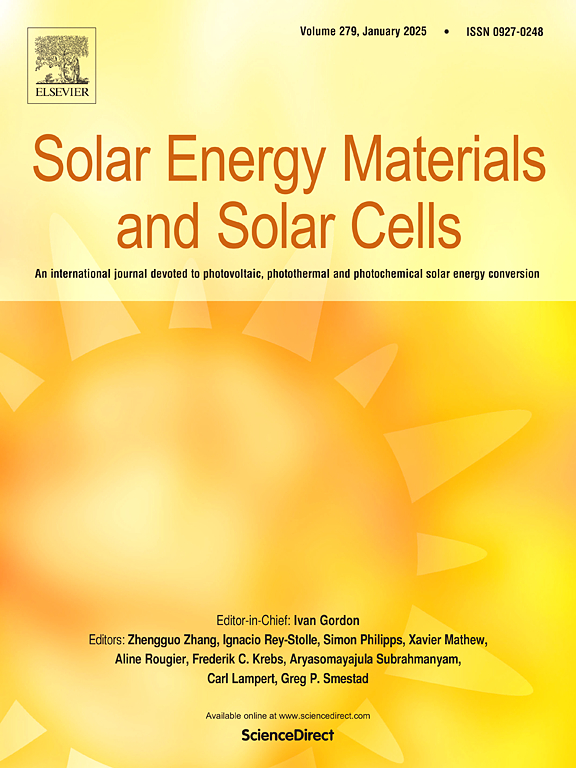Solar thermoplasmonic convection for sustainable removal of microplastics
IF 6.3
2区 材料科学
Q2 ENERGY & FUELS
引用次数: 0
Abstract
Vast quantities of plastic waste are deposited into marine environments annually, posing significant risks to aquatic organisms and biodiversity. This paper proposes a novel concept for the removal of microplastics from aquatic systems using solar thermoplasmonic convection. This method uses plano-convex lens to concentrate sunlight into an intense beam at a focal point. Alignment of this beam with the oscillation frequency of free electrons in a gold nanocone array induces surface plasmon resonance, which enhances the local electric field, catalyzes hot electron production, and producing intense heating to create a localized hotspot. The hotspot temperature reaches 353 K upon one sun flux. This hotspot induces large-scale thermal convections within the fluid, with a maximum velocity of 2.97 mm/s, efficiently drawing dispersed microplastics toward these thermal traps. Experimental results reveal that microplastics could coalesce into larger aggregates at the hotspot within about 120 s, even for microparticles as large size as 50 μm. Both the experiment and numerical analysis support that the convection current is crucial in the aggregation process. Pool and flow-through reactors with hotspot arrays are further explored for practical applicability. It was found that the optimizing reactor design and the spatial arrangement of hotspots can improve the collection efficiency. This study suggests a valuable method for microplastic remediation in aquatic settings, providing new insights into the multiphase flow dynamics.

求助全文
约1分钟内获得全文
求助全文
来源期刊

Solar Energy Materials and Solar Cells
工程技术-材料科学:综合
CiteScore
12.60
自引率
11.60%
发文量
513
审稿时长
47 days
期刊介绍:
Solar Energy Materials & Solar Cells is intended as a vehicle for the dissemination of research results on materials science and technology related to photovoltaic, photothermal and photoelectrochemical solar energy conversion. Materials science is taken in the broadest possible sense and encompasses physics, chemistry, optics, materials fabrication and analysis for all types of materials.
 求助内容:
求助内容: 应助结果提醒方式:
应助结果提醒方式:


